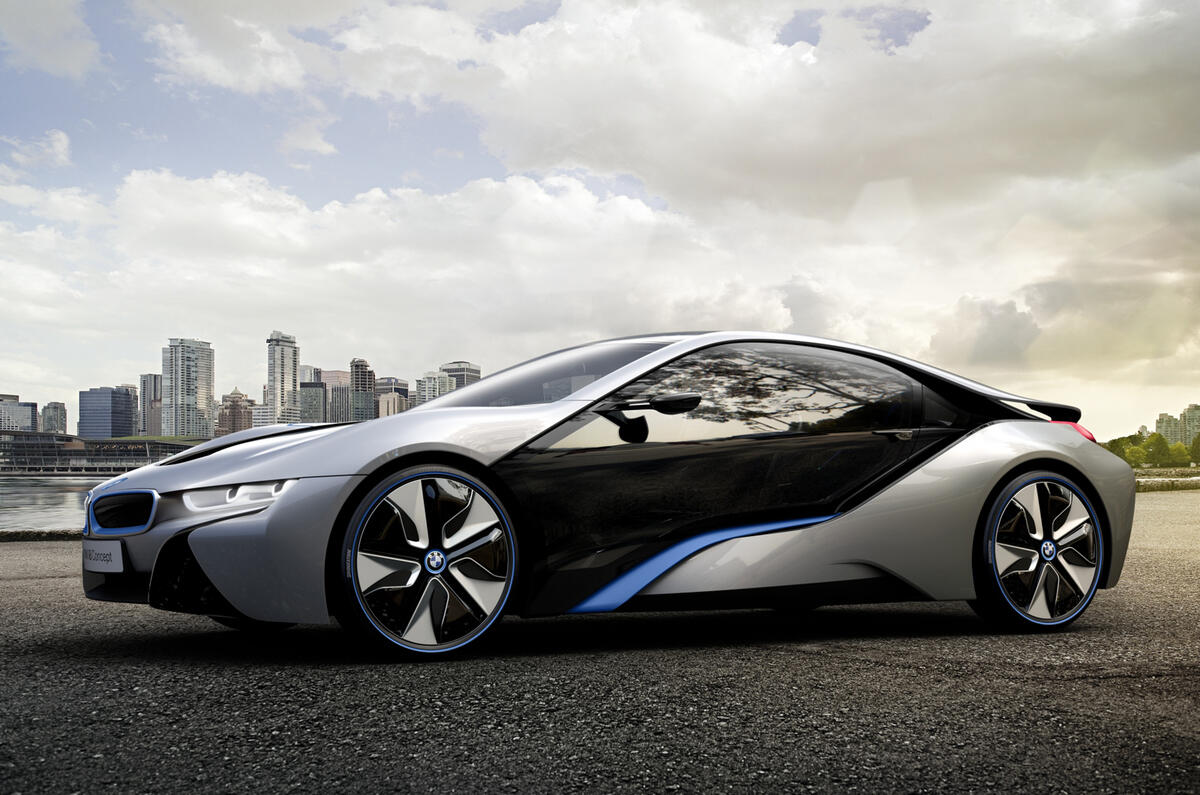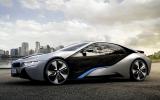The striking BMW i8 has been officially unveiled at the Frankfurt motor show BMW's alternative drive flagship is an advanced four-wheel-drive plug-in hybrid with performance to match an M3 and fuel economy to humble even the most frugal Mini.
Initially previewed by the Vision EfficientDynamics (Vision ED) concept back in 2009, the futuristically styled two-plus-two coupé has already undergone two years of intensive development. The result, BMW insiders describe to Autocar, is a car that drives “like nothing else”.
The BMW i8 is planned to go on sale in the UK in 2013 with a newly developed petrol-electric hybrid drive system. This allows it to run individually on either pure electric power or a combination of traditional combustion engine and electric power, depending on driving conditions and the state of battery charge.
The i8 has ditched Vision ED’s three-cylinder 1.5-litre diesel engine in favour of a direct-injection petrol engine of the same capacity. This engine is earmarked for the next-gen Mini range from 2012 and the new front-drive 1-series in 2014.
With 220bhp and 221lb ft of torque, the new petrol unit operates in combination with a 129bhp, 184lb ft electric motor for an overall output of 349bhp and 405lb ft.
As with the Vision ED concept, the petrol engine is mounted at the rear and drives the rear wheels via a dual-clutch gearbox. The electric motor is sited up front and acts on the front wheels through a twin-speed transmission.
When accelerating from standstill at low speeds and/or with sufficient battery charge, the i8 is capable of running exclusively on electric power in front-wheel-drive mode for distances up to 20 miles. At higher speeds and/or when the battery charge is depleted, the petrol engine kicks in to provide added performance in four-wheel-drive mode.
BMW quotes a 0-62mph time of 4.6sec – making it a remarkable 0.3sec faster up the strip than the M3 coupé. The new coupé is also claimed to possess a 50-75mph time of just 4.0sec and reach a top speed limited to 155mph.
The key to the BMW i8’s impressive straight-line performance is its comparatively low weight. Constructed around a body structure and boasting body panels fashioned predominately from CFRP (carbonfibre reinforced plastic), it is claimed to weigh 1480kg, equivalent to a power-to-weight ratio of 236bhp per tonne.
In combination with ultra-low aerodynamic and mechanical drag, the lightweight construction also provides the basis for outstanding fuel economy. BMW puts the i8’s combined economy at 104mpg, giving it average CO2 emissions of just 66g/km.
























Add your comment